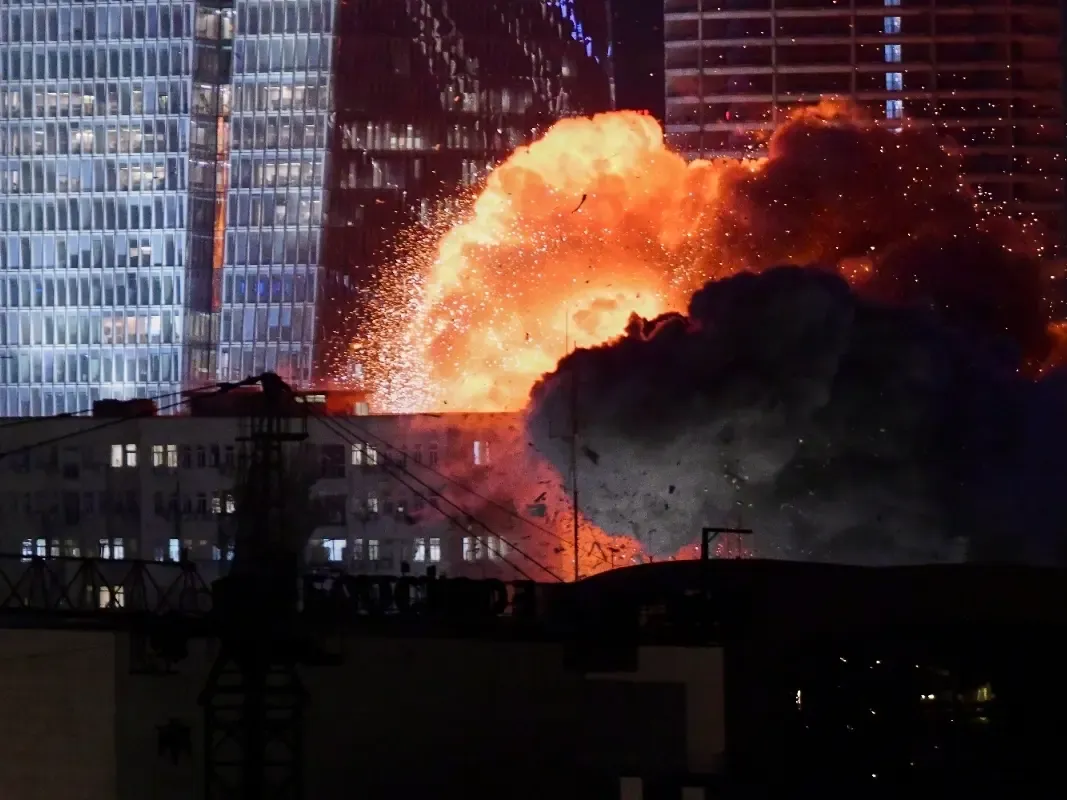Israeli forces launched a high-impact strike on a site near Rasht, Iran.
The targeted facility was believed to house military or missile-related infrastructure.
Explosions and thick smoke engulfed the area shortly after warnings were issued.
The attack forms part of Israel's broader operation against Iranian strategic assets.
No civilian casualties have been confirmed, but tensions across the region remain high.
Israeli Airstrike Rocks Northern Iran as Regional Tensions Soar
A Quick Recap of This Story
In the early hours of the morning, the city of Rasht in northern Iran was rocked by a powerful explosion that lit up the skies and sent shockwaves through the surrounding communities. The explosion followed an Israeli precision airstrike targeting what was identified as a strategic military installation within the city’s Sefid Rud industrial area. Residents were reportedly issued advance evacuation warnings, which suggests the strike was deliberately calibrated to avoid civilian casualties.
The attack marks the first time the northern Iranian city—nestled near the Caspian Sea and far from typical conflict zones—has been thrust directly into the frontlines of Israel’s ongoing campaign against Iranian military influence.
Flames in the Caspian Corridor
The facility targeted in Rasht is believed to be part of Iran’s growing network of industrial and technological infrastructure with suspected ties to missile development and advanced weapons logistics. After the strike, fire engulfed the area, with massive plumes of black smoke rising into the sky, visible from across the city. Eyewitnesses described a deafening blast followed by a rolling wave of heat and light—clear evidence of a high-impact, high-yield payload.
Emergency response teams were seen scrambling toward the impact zone, though the military cordoned off the area within minutes. No immediate reports of casualties were confirmed, but the psychological toll on the civilian population was evident, with widespread panic and displacement reported in nearby neighborhoods.
Strategic Calculations and Military Intent
This latest strike is not an isolated incident but part of a broader and intensifying Israeli operation targeting Iran’s strategic infrastructure. Over the past week, Israel has expanded its scope of action beyond traditional southern and central zones, directing strikes at nuclear-linked facilities, weapons storage sites, and key industrial nodes.

Rasht’s Sefid Rud zone was likely chosen due to its proximity to advanced technological hubs and transportation corridors that link northern Iran to other logistical networks. By striking this far north, Israel signals both reach and intent—no part of Iran is considered untouchable in its campaign to dismantle perceived threats.
A Broader Conflict in Motion
The airstrike on Rasht follows a pattern of escalating tit-for-tat military exchanges between Israel and Iran, each involving more daring and sophisticated operations. Iran has launched several retaliatory strikes in recent days, targeting both Israeli territory and allied installations. While some attacks have caused injuries and infrastructure damage, others were intercepted or deflected.
The strike in Rasht may also have diplomatic reverberations. Iran has repeatedly accused Israel of violating its sovereignty, while Israel maintains that it is acting in preemptive defense against threats emanating from Iran’s military-industrial buildup. Both sides are now engaged in an undeclared war that continues to escalate despite international calls for restraint.
The Road Ahead: Risks of Wider War
The explosion in Rasht serves as a grim reminder of how rapidly regional flashpoints can ignite. With both countries expanding the geography of their conflict, and neither side showing signs of de-escalation, the risk of miscalculation is growing. Cities once considered remote from the frontline—like Rasht—are now active theaters in a conflict that threatens to spill beyond borders.
Unless there is a meaningful diplomatic intervention or strategic recalibration, the strikes will likely continue. For the civilians of Rasht and other cities now in the crosshairs, the only certainty is that the war no longer feels distant.

0 comments
Be the first one to comment, but before that...
Here are some best practices for writing comments: